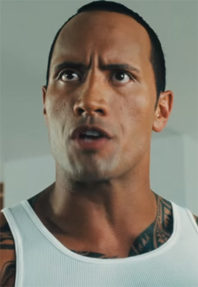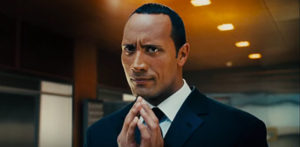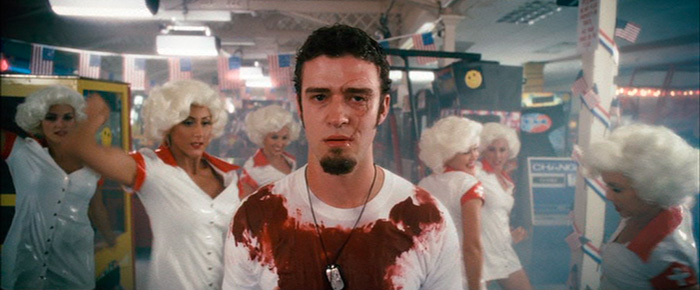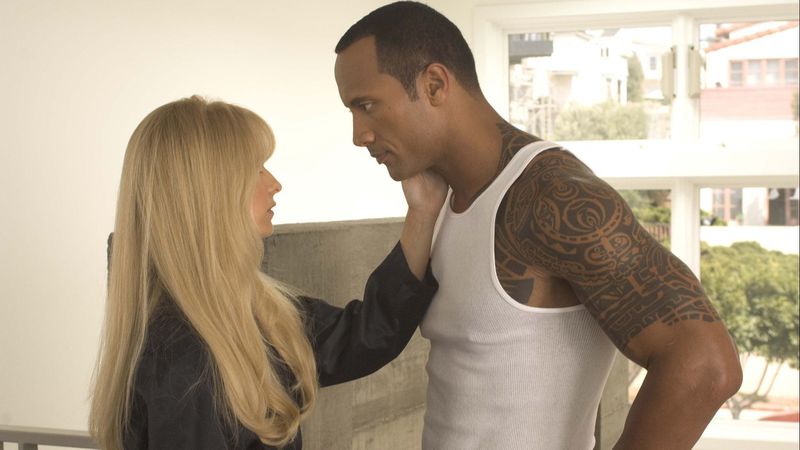
It goes without saying, but it remains a tremendous financial risk to fund a feature film. Even the most no-budget of feature films still have to pay for equipment, salaries, food (people are cranky when they’re hungry), props, and potentially film stock. The production of Robert Rodriquez’s El Mariachi, the bastion of no-budget filmmaking, still had a production budget of over $7,000. For a large percentage of the world, seven grand is a lot of money. This is largely why most films have producers outside of the director, who help provide funds and outside voices to potentially make films more profitable.
This, however, comes at a price. With more voices involved, the more likely that the vision becomes collaborative as opposed to singular. This is also not always the case, as if pressed, many cinephiles could probably name several directors known for getting more artistic freedom than usual, a form of cinematic carte blanche so to speak, where producers signed the checks and mostly left directors to their own devices. When considering directors for whom this may be the case, maybe your mind jumps to an M. Night Shyamalan, or maybe even a more positive case, a James Cameron. For me, however, there will always be textbook example of cinematic carte blanche: Richard Kelly’s Southland Tales.
With Cannes rolling along this week, I figured it would be a fascinating choice to revisit Kelly’s magnum opus as a gentle reminder that, even if your favourite director has a film that is released to somewhere between mixed and negative reviews, it can always be worse. It can always be much, much worse. If one was to choose the most disastrous festival premier of all time, one might truly struggle to think of a better choice than a film literally described by Roger Ebert as, “the most disastrous Cannes press screening since…The Brown Bunny.”

The film made it to Cannes largely on the back of Kelly’s reputation post-Donnie Darko, his debut feature. Darko had a similar trajectory to Southland Tales’ eventual release. The eventual release of Kelly’s first feature clashed with the September 11thAttacks, which severely hampered the ability to market the film, which has a plane crash as a crucial plot point. The growing DVD market, however, proved to be a boon for Kelly, as his film eventually found a very devoted audience. Likely, the vocal support from feature #1 contributed largely to Kelly getting more leeway with his eventually indulgent feature #2 Even though his follow-up was unfinished in 2006, Cannes really wanted Kelly’s film in competition. Needless to say, unfinished films rarely prove to be successful with audiences, the very reason that they’re not actually a completed product. The original 160-minute version of Southland Tales was infamously reviled at a time when negative reception had a much larger impact than it presently does.
Considering then the inarguably negative release at Cannes in 2006, it is no surprise that the film was ultimately buried by Samuel Goldwyn Films after being passed around like a hot potato amongst just about every major studio at the time. Southland Tales could very well be seen as the industry equivalent to a very aggressive game of, “I got it, you take it,” where after months of squabbling, eventually someone bit the bullet and released a parred down version of the film (now a much leaner 144 minutes) in just 63 screens almost a full eighteen months after Cannes. So, no matter how much you wish people were more enamoured with say, the new Bruno Dumont film, or that A24 didn’t simply give up on David Robert Mitchell ever getting around to properly editing Under the Silver Lake, it can always be worse. Count your blessings.
Or maybe not, because worse can be better sometimes. As much as Southland Tales is a film with a reception that is notorious, its current cult following is also probably one of the most ardently defended as far as early 21st Century cinema goes, and is really rivalled only by other staunchly defended internet darlings such as Speed Racer and Aronofsky’s The Fountain. As time goes by, Kelly’s once disaster piece seems to gain more traction. Almost every year, it seems as if another site dredges up the ghosts of Kelly’s apocalyptic vision, in order to simply suggest, “isn’t this film wild.” Enough time has passed since 2006, and Kelly’s film has grown to enough of a cult status for major institutions such as the Los Angeles County Museum of Art, to run retrospectives on the film. We all probably have that one friend who insinuates to anyone who will listen that Southland Tales is a masterpiece (spoiler alert: I am that friend).
In order to provide a modicum of originality, this Southland Tales think piece will attempt to focus less on simply attempting to chronicle the plot, although it will be touched upon, as some mention of the quixotic plot is an inevitable necessity when discussing this film. Instead, this week’s edition of Big Hot Mess strives to consider how the reception changed between late 2007 and today. Those who see Southland Tales, and live to tell the tale, are incapable of claiming that the film is anything but a complete and total mess. Yet, just how such a mess became a cult favourite can be seen deep within the text itself, and also within the surrounding cultural changes between then and now. In investigating the messiness of one of the messiest films ever made, we can see that cinema does not exist in a vacuum, and time irrevocably alters our perceptions of past works.

This piece therefore operates under the major assumption that you the reader know what Southland Tales is, and that you the reader have most likely seen the film. If you’re coming to this hoping for a blow-by-blow breakdown of everything that occurs, this piece will inevitably disappoint (there are much better examples of such a piece than I could possibly ever hope to write). I’ve found that this film is far more enjoyable when you simply let the peculiarities wash over you. In general, this genre of mind melt cinema of which Kelly’s film is a charter member, remains possibly the most over watched genre, as in you’re over watching the film. The tendency we fall into with extraordinarily dense films, is to scrutinize every little detail from the references to Robert Frost to the posters of Karl Marx dotting Venice Beach in the background, a process which renders larger scenes with obvious answers (we have to talk about “All These Things That I’ve Done,” at some point right?) incomprehensible. After over half a dozen viewing of Southland Tales, I remain no closer to solving what it “really” means than I did after my first viewing.
I have, however, gotten very close to an understanding of what it means to me. Specifically, whenever I think of Southland Tales, I think of the film’s more infamous quotes: “scientists are saying the future is going to be far more futuristic than they originally predicted.” Sarah Michelle Geller’s porn star turned clairvoyant media mogul Krista Now utters it, and like most of the dialogue from this film is delivered as if it is to be the most importance utterance in the history of communicable human language. In, and of itself, it is not any more important than any of the other well-known lines in the film. It provides little additional information, save potentially some deeper development of Geller’s character. More likely, the self-aggrandizing nature of such a quote is the primary reason for its inclusion. Yet, I can think of no better metaphor for watching Southland Tales in 2019 than, “scientists are saying the future is going to be far more futuristic than they originally predicted.”
Whenever I try to sell someone on this film, I provide the following rough plot outline: “the impending electoral victory of a Republican party that has made a xenophobic, and heavily illiberal, rendition of extreme national security its top priority, could be derailed by a sex tape involving a prominent Republican celebrity that may or may not exist, and may or may not be in the hands of a porn star, all while a climate related apocalypse is all but a certainty.” The responses from those unfamiliar with Kelly’s piece of cult cinema, frequently suggest a disbelief that such a film was made in 2006 and not now. Part of what I believe lends to the film’s staunch cult following today, is the fact that the film manages to predict much of the political future. Is the synopsis I provided above for a film, or the 2016 American Presidential Election? It’s hard to say. As the world beings to make less sense, Southland Tales begins to make more.

Even some of the more innocuous lines from the film feel bizarrely prophetic. At one point, Geller comments that she wants Steadicam work at a film level quality for her TV Show that’s like a movie, which stood out to a sore thumb to me considering the perpetual debates aiming to answer the question of what exactly is cinema in a modern age. The irony of the fact that I’m saying this after one of the biggest finales in television history for a show that was routinely considered in terms of its cinematic nature, is not lost on me. As time goes on, it is very possible that more of the smaller details present in the world of Southland Tales become strange red flags of a predicted future.
Therefore, it would be easy to suggest that Southland Tales was ahead of its time. This would seem entirely reasonable considering just how much of the film coincidentally matches the future. Yet, rewatching Southland Talesin 2019, I’m struck by how the film doesn’t really feel all that dated. There are definitely some dated touches (Moby on the score and the Hummer commercial are excellent examples), but the film is, at its core, dealing with anxieties that have been felt across millennia. Ideas of Orwellian surveillance and corporate control of energy related resources, are not exactly new concepts. Most important of these concepts can be found within the film’s apocalyptic fetish. Kelly ultimately ascertains to consider what might the apocalypse look like in a media saturated landscape. How would it be advertised, and would it be streamed live? Really, this is just updating of our perpetual obsession with our own demise.
But even then, there are so many wild details to Southland Tales that the current positive response was inevitable. One of my favourite scenes in the film involves Boxer Santaros (Dwayne “The Rock” Johnson) being debriefed by his wife (Mandy Moore) and her father (Holmes Osborne) regarding his amnesic episode that resulted in his shacking up with Krysta Now (Geller). Krysta is brought in to discuss what has occurred, and the situation devolves into bickering amongst the various groups. In a soap operatic twist, every time a character reveals a new piece of information, lightning cackles outside. God is either unhappy with the proceedings, or is egging his subjects on, likely both considering just how much this film is the absolute most. At the same time, I roar with laughter every time The Rock asks if he can see the DVD cover for the porn film the Moore is angrily holding.

I would be remise if I didn’t at least mention the sequence involving Justin Timberlake lip-synching the Killers “All These Things that I’ve Done.” It is the most renowned scene from Southland Tales. It’s also not consequential in the grand scheme of things. The point of this scene, ultimately, is to depict the results of his acid trip. There is no grand metaphor to him shooting up and tripping out. The emphasis on this, however, speaks to the mind games played by Kelly’s film. So much of this film is a flavour of pop culture cornucopia.
I would again suggest that the growing appreciation for this film is not a result of the film being ahead of its time, but rather, that the film’s time coincided with finally finding an audience. Southland Tales sits in this weird in-between stretch of cinema, where the DVD video market was no longer novel and streaming services had not reached their eventual proliferation. The second life came about slowly, when people came to the realization that Kelly’s magnum opus was more than just an incomprehensible disaster piece. In some senses, Big Hot Messes are often victim to the fact that the messiness is at the forefront. To determine if film’s such as Southland Tales are to ever reach beyond their messiness, one must sift past the endless passages from Revelations to understand the bizarre, and predictive, universality that may, or may not, be present. Those that are willing too will eventually do so, if it is truly there.

